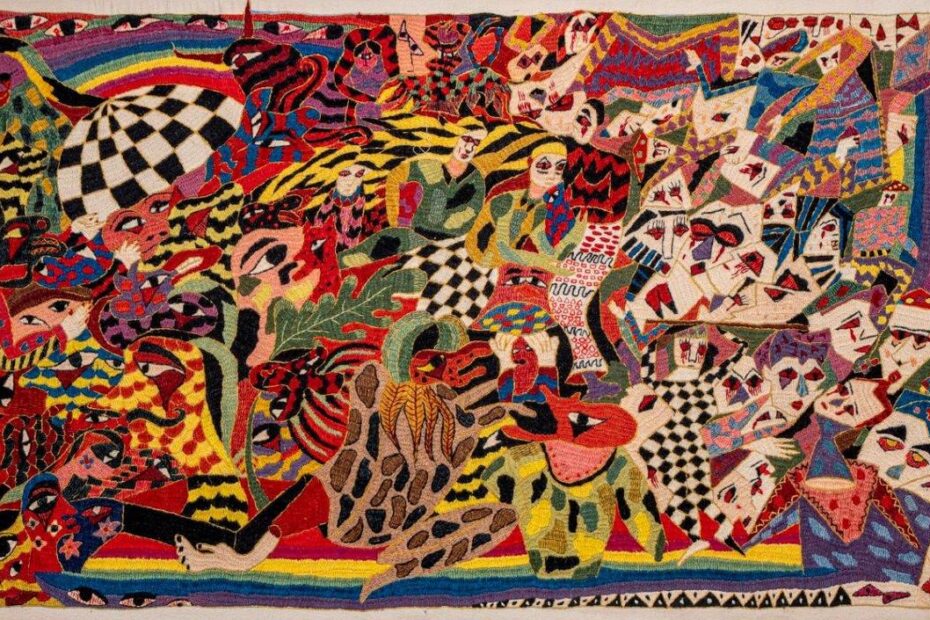Solo exhibition of Sara Soleimani Qashqai
Opening on 8th September 2023
On view until 22nd September 2023
Sara Soleimani Qashqai has grown up in the shadow of tribal tents and away from cityscapes, immersed in color and zest; her childhood adventures and playfulness were cultivated in a subjective roller-coaster in search of beauty and Joy.
The nomadic lifestyle artists witnessed as a child hardly exists anymore, and the collapse of this culture has left a deep mark on the artist’s psyche. In response, she began a path of discovery by studying the artistic imagery and legacy connected to Iranian nomads alongside her academic career. She studied Conservation of Historical Artefacts & Restoration at Bahonar University of Kerman and a Master’s in Beaux-Arts from Tehran Azad University.
She has undertaken several research projects, including long-term and widespread field studies on the tribes of Fars, Kohgiluyeh and Boyer-Ahmad, Chaharmahal and Bakhtiari provinces.
She has studied, sketched, preserved, and reconstructed the patterns and compositions of woven articles of different tribes, namely, the Qashqai, Bakhtiari, and Baluch.
She takes up the needle, thread, and fabric for her artistic creations, settling for Kerman’s Pateh Doozi. She incorporates her own narratives on the rich tapestry she creates using the technique and know-how of lady artisans of Kerman province. Juxtaposing the old and the new, the artist shows her concerns, fears, and hopes.
About Pateh (a.k.a Pateh Doozi)
Pateh Doozi, also known as "Selseleh Doozi" or "Fateh Doozi," is an important handicraft of Kerman province. Fortunately, this craft is still being practiced, and making Patehs is one of the most flourishing trades in the region. Due to the vulnerability of textiles, no Pateh product has survived from ancient times, and very little is known about its history. However, according to travel documentaries and texts from the Safavid dynasty, Pateh was quite popular in Kerman then.
Pateh Doozi, or the art of sewing Pateh, is a kind of embroidery in which all over the textile is covered by colorful stitches. The makers of Pateh are most commonly young girls and women of Kerman who sew the patterns from their own imagination on wide and thick fabrics called "Ariz" or "Shawl." Ariz is a handmade fabric that, in the past, was used to make skirts, coats, and women's overcoats. This fabric is made by manual and automatic textile machinery in red, yellow, white, blue, and green colors. "Ris," or the yarn used in Pateh, is a wool yarn that was handspun in the past, but today, it is spun by machines. Traditionally, the yarns are dyed with colors such as burgundy, black, light or dark green, yellow, orange, red, dark blue, etc. However, new colors have been added to Pateh's color palettes. In the past, Golabatoon and silk yarns were used, too.
One of the traits of Pateh, which adds to its beauty and delicacy, is the traditional motif of the tree of life or "Boteh Jegheh," paisley. It is one of the most popular Iranian motifs. Today, Pateh is most common in cities such as Kerman, Sirjan, and Rafsanjan and is used to make tablecloths, covers of the holy Quran, curtains, cushions, bed covers, decorating parts of clothing, and traditional dolls. Pateh has long been considered a part of the dowry of young girls of Kerman, which is one reason why it is still thriving.








